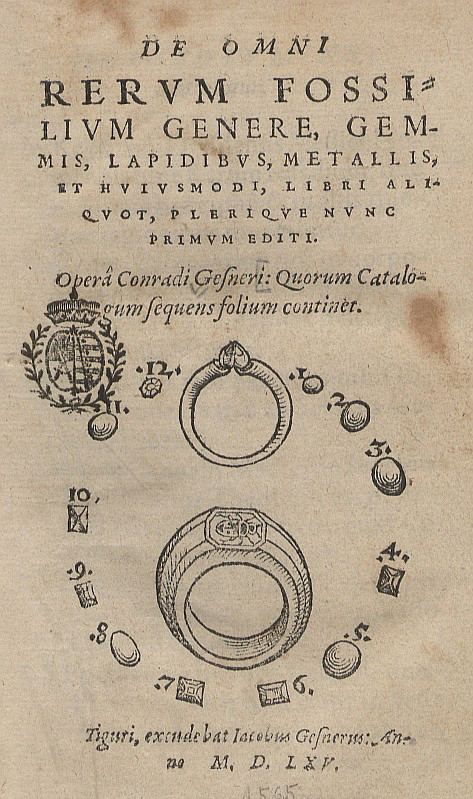 | ||
A lapidary is a text, often a whole book, giving "information about the properties and virtues of precious and semi-precious stones", that is to say a work on gemology. Lapidaries were very popular in the Middle Ages, when belief in the inherent power of gems for various purposes was widely held, and among the wealthy collecting jewels was often an obsession, as well as a popular way to store and transport capital.
Contents
The medieval world had little systematic geological knowledge, and found it difficult to distinguish between many stones with similar colours, or the same stone found in a variety of colours. Lapidaries are often found in conjunction with herbals, and as part of larger encyclopedic works. Belief in the powers of particular types of jewel to achieve effects such as protecting the wearer against diseases or other kinds of harm was strong in the Middle Ages, and explaining these formed much of the material in lapidaries. In the Middle Ages, scholars often distinguish "three different kinds of lapidaries: 1. the scientific lapidary 2. the magical or astrological lapidary and 3. the Christian symbolic lapidary", although contemporary readers would have regarded both the first two categories as representing scientific treatments.
The objects regarded as "stones" in the classical, medieval Renaissance periods included many now classified as metallic compounds such as cinnabar, haemetite, calamine, or organic or fossil substances including pearl, coral, amber, and the mythical lyngurium described below.
There were traditions of lapidary texts outside Europe, in the Islamic world as well as East Asia. The Chinese tradition was for long essentially concerned with the aesthetic qualities of stones, but by the later Middle Ages were influenced by the classical Western tradition, as transmitted through Islamic texts.
Medicine
Just as drugs derived from plants were and are important in medicine, it seemed natural to the ancient and medieval mind that minerals also had medical properties (and indeed many mineral-derived chemicals are still in medical use). Saint Thomas Aquinas, the dominant theologian of the Late Middle Ages, propounded the view that the whole of the natural world had ultimately been created by God for the benefit of man, leading medieval Christians to expect to find beneficial uses for all materials. Lapidaries listed the medical benefits of particular gems, with "the most common method of medical application" being wearing the stone on one's person in a jewellery setting, for example in a ring. Open-backed settings allowing direct contact between the skin and stone were encouraged; otherwise the stone might simply be held against the skin. Other forms of application included ointments containing ground stones or taking the stone internally in ground form, often as part of a cocktail of several different herbal, mineral and other ingredients; this seems to have become especially often mentioned in the 16th and 17th centuries. There were other methods of application; Theophrastus is much less concerned with medical aspects of his subject than the writers of later lapidaries, but he notes that smaragus is good for the eyes, and operates by being looked at.
Stones were covered in other general medical books, ranging from the 1st century Greek De Materia Medica by Dioscurides to a wide range of Early Modern medical self-help books.
Christian symbolism
A school of lapidaries expounded the symbolism of gems mentioned in the Bible, especially two sets of precious and semi-precious stones listed there. The first of these were the twelve jewels, in engraved gem form, on the Priestly breastplate described in the Book of Exodus (Exodus 28:15–19), and the second the twelve stones mentioned in the Book of Revelation as forming the foundation stones of the New Jerusalem (Revelation 21:18–20)—eight of these are the same (or were in the Vulgate translation). The late Anglo-Saxon Old English Lapidary took the latter group as its subject. The symbolism of these sets had been explored by theologians since Saints Jerome and Augustine. Various other schemes were developed, linking stones to particular saints, classes of angels, and other areas of Christianity.
Astrology
Another type of lapidary dealt with the astrological relationships and significance of gems; one of the largest was the Lapidary of Alfonso X or "Alfonso the Learned", King of Castile (r. 1252–1284), which was compiled for him by other authors, mostly Muslim. This was in several parts and set out the relationships between the Signs of the Zodiac, with each degree of each sign relating to a stone, and the astrological planets and other bodies, again related to particular stones. The strength of the medical and magical properties of stones was said to vary with the movements of the heavenly bodies that controlled them.
